In which of the following compound, centre atom forms six or more than six hybrid orbitals ?
PCl5
CO2−3
SO3
XeF6
The correct Answer is:D
To determine which compound has a central atom that forms six or more hybrid orbitals, we will analyze each option step by step.
Step 1: Analyze Option A - PCl5
1. Structure: PCl5 has a phosphorus (P) atom at the center bonded to five chlorine (Cl) atoms.
2. Bond Pairs and Lone Pairs: There are 5 bond pairs and 0 lone pairs.
3. Hybridization: The hybridization can be determined using the formula:
Hybridization=Number of bond pairs+Number of lone pairs=5+0=5
This corresponds to sp³d hybridization, which uses 5 hybrid orbitals.
4. Conclusion: PCl5 does not have six or more hybrid orbitals.
Step 2: Analyze Option B - CO3²⁻
1. Structure: CO3²⁻ (carbonate ion) has a central carbon (C) atom bonded to three oxygen (O) atoms.
2. Bond Pairs and Lone Pairs: There are 3 bond pairs and 0 lone pairs.
3. Hybridization:
Hybridization=3+0=3
This corresponds to sp² hybridization, which uses 3 hybrid orbitals.
4. Conclusion: CO3²⁻ does not have six or more hybrid orbitals.
Step 3: Analyze Option C - SO3
1. Structure: SO3 (sulfur trioxide) has a sulfur (S) atom at the center bonded to three oxygen (O) atoms.
2. Bond Pairs and Lone Pairs: There are 3 bond pairs and 0 lone pairs.
3. Hybridization:
Hybridization=3+0=3
This corresponds to sp² hybridization, which uses 3 hybrid orbitals.
4. Conclusion: SO3 does not have six or more hybrid orbitals.
Step 4: Analyze Option D - XeF6
1. Structure: XeF6 (xenon hexafluoride) has a xenon (Xe) atom at the center bonded to six fluorine (F) atoms.
2. Bond Pairs and Lone Pairs: There are 6 bond pairs and 1 lone pair.
3. Hybridization:
Hybridization=6+1=7
This corresponds to sp³d³ hybridization, which uses 7 hybrid orbitals.
4. Conclusion: XeF6 has six or more hybrid orbitals.
Final Answer
The compound in which the central atom forms six or more hybrid orbitals is XeF6.
---
1. Structure: PCl5 has a phosphorus (P) atom at the center bonded to five chlorine (Cl) atoms.
2. Bond Pairs and Lone Pairs: There are 5 bond pairs and 0 lone pairs.
3. Hybridization: The hybridization can be determined using the formula:
Hybridization=Number of bond pairs+Number of lone pairs=5+0=5
This corresponds to sp³d hybridization, which uses 5 hybrid orbitals.
4. Conclusion: PCl5 does not have six or more hybrid orbitals.
1. Structure: CO3²⁻ (carbonate ion) has a central carbon (C) atom bonded to three oxygen (O) atoms.
2. Bond Pairs and Lone Pairs: There are 3 bond pairs and 0 lone pairs.
3. Hybridization:
Hybridization=3+0=3
This corresponds to sp² hybridization, which uses 3 hybrid orbitals.
4. Conclusion: CO3²⁻ does not have six or more hybrid orbitals.
1. Structure: SO3 (sulfur trioxide) has a sulfur (S) atom at the center bonded to three oxygen (O) atoms.
2. Bond Pairs and Lone Pairs: There are 3 bond pairs and 0 lone pairs.
3. Hybridization:
Hybridization=3+0=3
This corresponds to sp² hybridization, which uses 3 hybrid orbitals.
4. Conclusion: SO3 does not have six or more hybrid orbitals.
1. Structure: XeF6 (xenon hexafluoride) has a xenon (Xe) atom at the center bonded to six fluorine (F) atoms.
2. Bond Pairs and Lone Pairs: There are 6 bond pairs and 1 lone pair.
3. Hybridization:
Hybridization=6+1=7
This corresponds to sp³d³ hybridization, which uses 7 hybrid orbitals.
4. Conclusion: XeF6 has six or more hybrid orbitals.
The compound in which the central atom forms six or more hybrid orbitals is XeF6.
Topper's Solved these Questions
- CHEMICAL BONDING-I & IIBook:VMC MODULES ENGLISHChapter:CHEMICAL BONDING-I & IIExercise:JEE Main (Numerical Value Questions)
Explore 15 Videos
- CHEMICAL BONDING-I & IIBook:VMC MODULES ENGLISHChapter:CHEMICAL BONDING-I & IIExercise:JEE Main (Archive)
Explore 62 Videos
- CHEMICAL BONDING-I & IIBook:VMC MODULES ENGLISHChapter:CHEMICAL BONDING-I & IIExercise:Level - 1 (JEE Main)
Explore 75 Videos
- CHEMICAL BONDING & MOLECULAR STRUCTURE Book:VMC MODULES ENGLISHChapter:CHEMICAL BONDING & MOLECULAR STRUCTURE Exercise:IN-CHAPTER EXERCISE-L
Explore 9 Videos
- CHEMICAL EQUILIBRIUMBook:VMC MODULES ENGLISHChapter:CHEMICAL EQUILIBRIUMExercise:IN-CHAPTER EXERCISE - G
Explore 10 Videos
Similar Questions
Knowledge Check
Which of the followingg compounds are more basic than
 ACH3−CH2−..NH2BCH3−NH∣∣C−NH2C
ACH3−CH2−..NH2BCH3−NH∣∣C−NH2C DCH2=CH−..NH2
DCH2=CH−..NH2Which of the following compounds contain more acidic hydrogen than hydrogen of
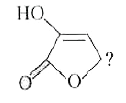 A
A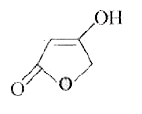 B
B C
C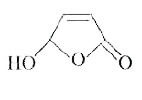 D
D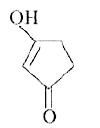
In which of the following keto form is more dominating than enol form:
A B
B C
C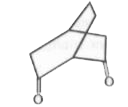 Dall of these
Dall of these
In which of the following molecule, central atom has more than 8 electrons in outermost orbit?
View SolutionIn which of the following the central atom does not use sp2 hybrid orbitals in its bonding
View SolutionWhich of the following complexes has six coordination number?
View SolutionIn which of the following molecules gauche form is more stable than their anti form?
View SolutionWhich of the following compounds are more acidic than H2O?
View Solution